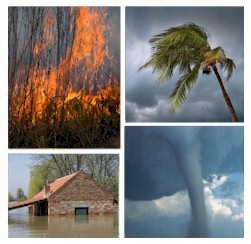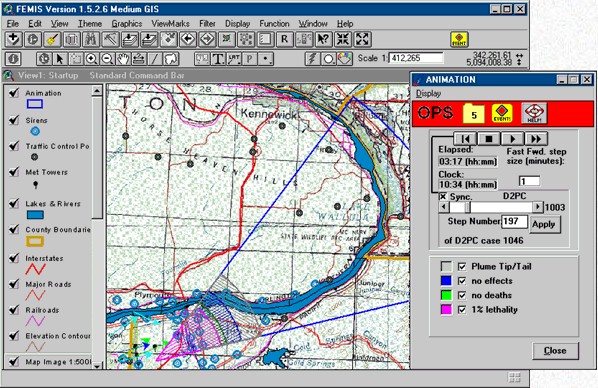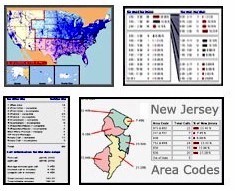|
|


Emergency Alert Systems
 This section of our technical library presents articles written about Emergency Alert Systems and Disaster Recovery definitions, terms and related information.
This section of our technical library presents articles written about Emergency Alert Systems and Disaster Recovery definitions, terms and related information.
The 911Broadcast emergency notification and alert service can deliver a large number of phone calls using a network of phone systems employing digital phone lines simultaneously. Should a disaster such as a snow storm, wild fire or flood hit your area, 911Broadcast systems can alert your community quickly providing specific instructions if an evacuation is required.
This service is available using our emergency broadcasting systems. If a dangerous chemical spill occurs in your community, you can target specific areas to call. If a severe snow storm hits your area, your community can be notified of school closings or event cancellations.
The Federal Emergency Management Information System (FEMIS)
From: www.pnl.gov/femis/about
By: Sharon Johnson
An Automated Decision Support System
Automation can assist emergency managers in successfully responding to the enormous task of implementing plans under the pressures of time, risk, and inadequate information.
The Federal Emergency Management Information System (FEMIS), developed at the Pacific Northwest National Laboratory (PNNL), is an automated decision support system that integrates all phases of emergency management. FEMIS is unique in that it is planning based. During an actual response, emergency personnel can retrieve and execute plans created under non-emergency conditions. FEMIS was specifically designed to support operations in response to an accidental chemical agent release and has been expanded to include capabilities for use with other hazards.
The system utilizes a client-server platform to support multiple users, distributed data, and multiple operations centers. FEMIS uses a UNIX central data server and Windows-based PC clients.
Features of FEMIS
FEMIS tightly integrates the preparedness, response, mitigation, and recovery phases of emergency management. During the planning process, planners use hazard analysis modeling, demographic information, and community conditions to assess vulnerability. Protective action strategies are developed using emergency information such as facilities and traffic control points that may be impacted, as well as other geographic information. Scenario datasets allow planners to create as many separate plan task lists as vulnerability analyses indicate are needed.
During response to an actual emergency, the response decisions are tracked in the FEMIS navigator. Current hazard analysis, including decisions concerning threatened areas and zones at risk, is available. The current community conditions, linked with the planned protective action strategies for this hazard situation, allow FEMIS to suggest the best-fitting plan task list to use in response. After the task list is selected, multiple users can change status for individual tasks, making an overall status available to all users. Any changes made to the task list during a response can be saved for analysis and possible plan improvement.
FEMIS can generate and deliver reports online, using system data and graphics such as maps. Hazard analysis modeling provides output in the form of text reports, static graphical reports displayed on the geographic information system (GIS), and the GIS displays animation over time. Estimates of the population at risk are provided based on census data and the threatened area, and a report of the population and facilities that are potentially at risk can be run.

Figure: Hazard Analysis Animation Modeling Map Display
In daily operations and response, FEMIS enhances communications by replicating current information between jurisdictions. Decisions and activity information are conveyed several ways:
- Shared reports provide a method to transfer information between individuals and EOCs in free-formatted text.
- Pre-defined status boards display task status, shelter use, evacuees, casualties, and meteorological information.
- Site-Defined Status Boards let users create a status board of their own design to be used by their own jurisdiction or to be shared with other jurisdictions.
- User-defined points and polygons allow users to share geographic information between jurisdictions.
Web Operational Status Boards (Web OSB) are a web-based tool that allows emergency managers to identify highly dynamic status information and disseminate appropriate information within an EOC, to multiple EOCs at a site, and to users outside the EOC who need to know the information (shelters, schools, hospitals). Web OSB supports "on-the-fly" planning and response activities using Site Defined Status Boards or Shared Reports.
Users can view, add, or edit Site Defined Status Board contents using a browser. Status board structure changes can be made using the FEMIS Site Defined Status Board Designer. Both structure and content changes are seen by users when they update their window.
FEMISí exercise mode duplicates its operational functionality and data to allow users to train on the same system and use the same data they will use in day-to-day emergency management operations without interrupting daily operations.
Local, state, and federal emergency management (EM) experts developed the requirements for FEMIS. FEMIS is built on a suite of commercial-off-the-shelf (COTS) software products, including ArcView and Oracle. The U.S. government provides the hazard analysis model.
Partnering Opportunities
The general hazard capabilities have been packaged into a separate product called EMADVANTAGE (Emergency Management Advantage). This system provides a decision support architecture that can be directly applied to a site's general emergency management needs or expanded to create a system for a specific hazard.
EMADVANTAGE is being used to support EM projects, such as PEMEX and Earth Alert.
For PEMEX, EMADVANTAGE was tailored to support EM activities at oil refineries in Mexico. In addition to making the software bilingual and providing site-specific equipment and chemical databases, the system was expanded to include several new models. These models include: toxic release, fire, HF, and Bleve. Electronic plans were constructed to directly support the daily operations and response activities at the Minatitlan Refinery.
For Earth Alert, a National Aeronautics and Space Administration (NASA) project, PNNL expanded EMADVANTAGE to transfer information and decisions to wireless devices called E-Gloves. The E-glove integrates a PDA (personal digital assistant), wireless modem, and global positioning system (GPS) device into a single unit. This system transfers messages to the E-Glove based on the userís subscription, such as the locations of wireless users, weather conditions, traffic conditions, ad-hoc messages, and damage assessment information.
Our Service Is Activated Online Or By Phone
 The 911 emergency broadcast service is easy to install and use. We help you collect community call lists and organize them in a fashion that best fits your emergency broadcast requirements. When an emergency arises, you simply record your emergency message offline or use our toll free phone service to record your message.
Next identify your call recipients using a simple list manager or a graphical map display and send us your phone numbers via the internet. You can also identify pre-defined lists to call using simple touchphone responses on our toll free service. We do the rest.
Unlike some systems that are limited by the number of lines available to perform this emergency dialing, our service is provided to you using a network of thousands of phone lines that can deliver your emergency messages much faster.
Our emergency notification system delivers messages to individuals or answering machines and can even allow the call recipient to make touchphone selections. This may be critical if your response center requires a positive acknowledgement from the call recipient.
The 911 emergency broadcast service is easy to install and use. We help you collect community call lists and organize them in a fashion that best fits your emergency broadcast requirements. When an emergency arises, you simply record your emergency message offline or use our toll free phone service to record your message.
Next identify your call recipients using a simple list manager or a graphical map display and send us your phone numbers via the internet. You can also identify pre-defined lists to call using simple touchphone responses on our toll free service. We do the rest.
Unlike some systems that are limited by the number of lines available to perform this emergency dialing, our service is provided to you using a network of thousands of phone lines that can deliver your emergency messages much faster.
Our emergency notification system delivers messages to individuals or answering machines and can even allow the call recipient to make touchphone selections. This may be critical if your response center requires a positive acknowledgement from the call recipient.
Purchase Or Outsource?
This is a question that communities should carefully consider. A purchased system gives you more control, but requires sufficient phone lines, equipment and on site technical knowledge to keep your system operational. The larger your community, the greater capital expense is required to broadcast your emergency messages in a timely fashion. If your message broadcasting system is used for more than just emergencies, it is easier to justify a purchase over contracted service. After all, emergency phone broadcasting is something you hope you never need to use.
Contracting your emergency broadcasting service requires less up front capital and can provide a faster emergency broadcast response if your provider has the resources available. Other than a monthly subscription fee, you only pay for the emergency broadcast as it occurs. System redundancy is available as well as centralized and experienced technical assistance.
|




 This section of our technical library presents articles written about Emergency Alert Systems and Disaster Recovery definitions, terms and related information.
This section of our technical library presents articles written about Emergency Alert Systems and Disaster Recovery definitions, terms and related information.

 The 911 emergency broadcast service is easy to install and use. We help you collect community call lists and organize them in a fashion that best fits your emergency broadcast requirements. When an emergency arises, you simply record your emergency message offline or use our toll free phone service to record your message.
Next identify your call recipients using a simple list manager or a graphical map display and send us your phone numbers via the internet. You can also identify pre-defined lists to call using simple touchphone responses on our toll free service. We do the rest.
Unlike some systems that are limited by the number of lines available to perform this emergency dialing, our service is provided to you using a network of thousands of phone lines that can deliver your emergency messages much faster.
Our emergency notification system delivers messages to individuals or answering machines and can even allow the call recipient to make touchphone selections. This may be critical if your response center requires a positive acknowledgement from the call recipient.
The 911 emergency broadcast service is easy to install and use. We help you collect community call lists and organize them in a fashion that best fits your emergency broadcast requirements. When an emergency arises, you simply record your emergency message offline or use our toll free phone service to record your message.
Next identify your call recipients using a simple list manager or a graphical map display and send us your phone numbers via the internet. You can also identify pre-defined lists to call using simple touchphone responses on our toll free service. We do the rest.
Unlike some systems that are limited by the number of lines available to perform this emergency dialing, our service is provided to you using a network of thousands of phone lines that can deliver your emergency messages much faster.
Our emergency notification system delivers messages to individuals or answering machines and can even allow the call recipient to make touchphone selections. This may be critical if your response center requires a positive acknowledgement from the call recipient.